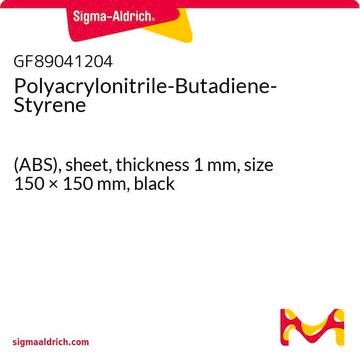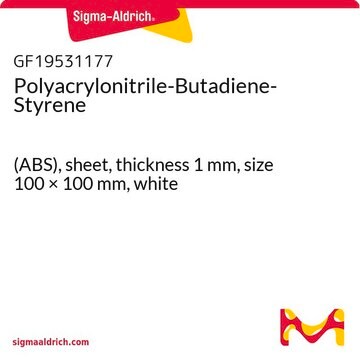180882
Poly(acrylonitrile-co-butadiene-co-styrene)
acrylonitrile ~40 wt. %, powder
About This Item
Productos recomendados
Formulario
powder
composición
acrylonitrile, ~40 wt. %
solubilidad
acetone, MEK and DMF: soluble
water and alcohols: insoluble
densidad
1.04 g/mL at 25 °C
cadena SMILES
C=CC=C.C=CC#N.C=Cc1ccccc1
¿Está buscando productos similares? Visita Guía de comparación de productos
Características y beneficios
Código de clase de almacenamiento
11 - Combustible Solids
Clase de riesgo para el agua (WGK)
WGK 3
Punto de inflamabilidad (°F)
Not applicable
Punto de inflamabilidad (°C)
Not applicable
Equipo de protección personal
Eyeshields, Gloves, type N95 (US)
Elija entre una de las versiones más recientes:
¿Ya tiene este producto?
Encuentre la documentación para los productos que ha comprado recientemente en la Biblioteca de documentos.
Nuestro equipo de científicos tiene experiencia en todas las áreas de investigación: Ciencias de la vida, Ciencia de los materiales, Síntesis química, Cromatografía, Analítica y muchas otras.
Póngase en contacto con el Servicio técnico







